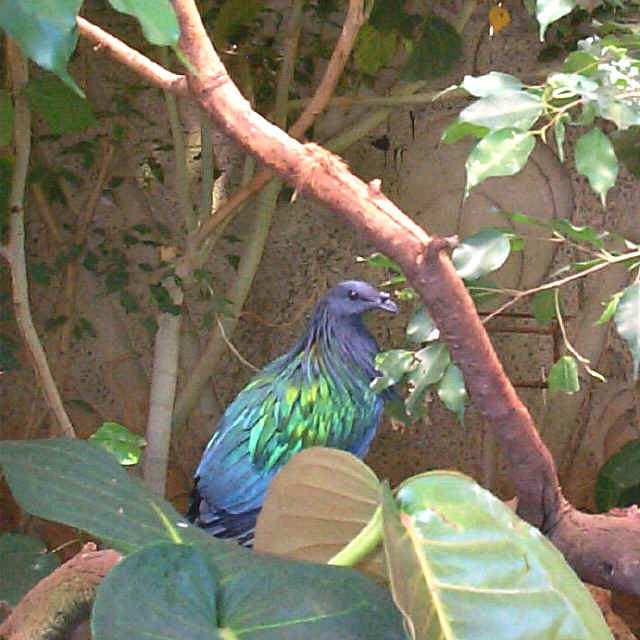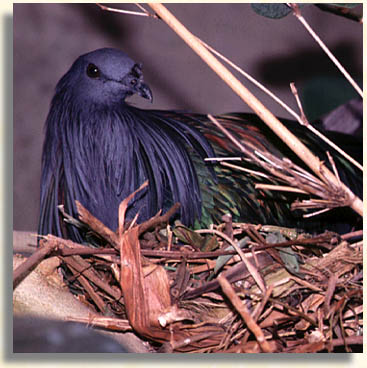General information:

(Photographer unknown: Photo courtesy of the Honolulu
Zoo)
http://www.honoluluzoo.org/images/nicobar_pigeon4.htm
The Nicobar is
nomadic, they commute from island to island in flocks up to 85 birds at
a height of 60m or more during the day to find food (hard seeds, fruits,
insects, and corn). Tthey feed off of the ground, toss leaves aside
and dig with their bill. These pigeons roost together at night on
islands that are not inhabited. The Nicobar does not sip when drinking,
instead they are like other pigeons and doves, they immerse their bill
sucking up the water. The Nicobar is usually silent, but their vocalization
is a deep cooing sound. The breeding season for these pigeons seemed
to be prolonged, but these birds are monogamous and tend to mate for a
life time. It seems as if the male bows to the female and coos loudly,
this action can go on for days. This is followed by the building
of the nest. The male provides the nesting site which is normally
in thick brushy areas, also they gather 3-4 twigs, roots and other material
needed to build the nest. The female arranges the twigs so that the
egg would be stable and not roll. Their nest can be as low as 2m
above the ground in undisturbed colonies, or just below the canopy top
to 12m in disturbed sites. In each clutch, there is 1 egg (there
can usually be 2 eggs) elliptical in shape and white, with a faint bluish
tinge. Both the male and the female share the incubating duties which
last 30 days (two and a half weeks for each parent). The birds are
hatched nearly naked, with shiny black skin. When born, the birds
are helpless, and require attentive parental care and feeding. They
are first fed "crop milk" which is a rich fluid regurgitated by the female
parent. Gradually the birds switch to a solid diet of fruit and seed.
The parents try to keep their young as warm as possible, until their feathers
begin to grow (about 10 days). Within less than a month the young
pigeons can fend for themselves even though they remain in their nest.
|

